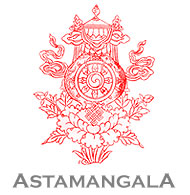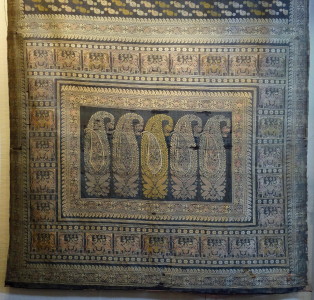Baluchar sari
silk weaving with purple
Northeastern India, Bihar (Murshidabad), 19th cent.
wide 115 cm.
shown is the endpiece (anchali); the complete sari is ca. 5-6 m. long.
this type of sari-weaving was done only in the village of Murshidabad and was famous in the whole of India. The last weaver who could weave this complex patterns died in the late 19th cent.
Rare and very interesting is the depiction of Englishmen, seated on chairs with a table. In the Tapi Collection, Surat (India) is a very similar sari, woven by the master-weaver Dubraj Das (ca. 1850 AD).
see:
EvRustam J.Mehta, Masterpieces of Indian Textiles, Bombay, 1970, plate 9-12.
Maria Rakob e.a., Sahib, Bibi, Nawab – Baluchar Silks of Bengal: 1750-1900, Surat (Tapi Collection), 2014, nr. 19 (p. 72-73).


